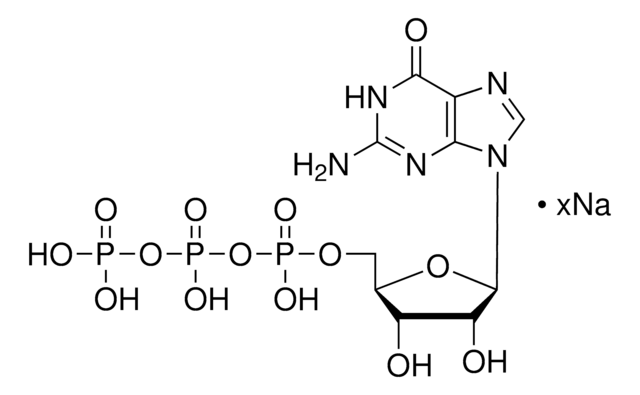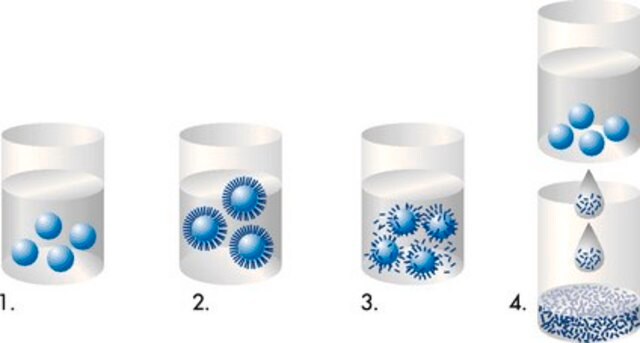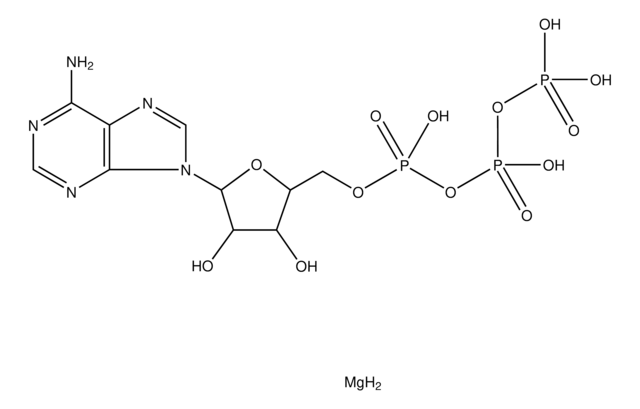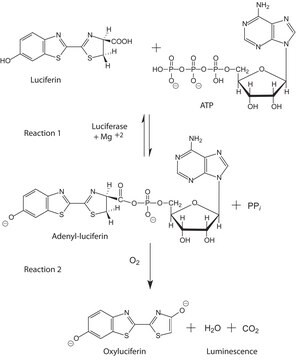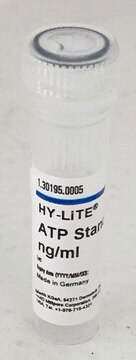A6559
Adenosine 5′-triphosphate disodium salt solution
Crystalline ATP, HPLC purified, aqueous solution for RNA transcription
Synonym(s):
ATP
About This Item
Recommended Products
Quality Level
form
liquid
concentration
100 mM in H2O (adjusted to pH 7 with Trizma®
base)
foreign activity
DNase, RNase, none detected
shipped in
dry ice
storage temp.
−20°C
SMILES string
[Na+].[Na+].Nc1ncnc2n(cnc12)[C@@H]3O[C@H](COP(O)(=O)OP([O-])(=O)OP(O)([O-])=O)[C@@H](O)[C@H]3O
InChI
1S/C10H16N5O13P3.2Na/c11-8-5-9(13-2-12-8)15(3-14-5)10-7(17)6(16)4(26-10)1-25-30(21,22)28-31(23,24)27-29(18,19)20;;/h2-4,6-7,10,16-17H,1H2,(H,21,22)(H,23,24)(H2,11,12,13)(H2,18,19,20);;/q;2*+1/p-2/t4-,6-,7-,10-;;/m1../s1
InChI key
TTWYZDPBDWHJOR-IDIVVRGQSA-L
Looking for similar products? Visit Product Comparison Guide
Related Categories
General description
Application
- as a standard to evaluate the extracellular ATP release from marginal cells of stria vascular
- as a component of the internal pipette solution to establish a recording electrode to study neurite stretching
- in in vitro VPS34 (catalytic subunit of the phosphatidylinositol 3-kinase (PtdIns3K) complex) activity assay
- as a component of lysis and resealing buffers for ATP studies
- in spectrophotometric measurement of H+ transport in fluorescein isothiocyanate (FITC)-dextran loaded A549 (adenocarcinomic human alveolar basal epithelial cells) and HeLa cells
- to induce pyroptosis in lipopolysaccharide treated fibroblast-like synoviocytes (FLSs)
Biochem/physiol Actions
Legal Information
also commonly purchased with this product
Storage Class Code
10 - Combustible liquids
WGK
WGK 1
Flash Point(F)
Not applicable
Flash Point(C)
Not applicable
Personal Protective Equipment
Certificates of Analysis (COA)
Search for Certificates of Analysis (COA) by entering the products Lot/Batch Number. Lot and Batch Numbers can be found on a product’s label following the words ‘Lot’ or ‘Batch’.
Already Own This Product?
Find documentation for the products that you have recently purchased in the Document Library.
Customers Also Viewed
Our team of scientists has experience in all areas of research including Life Science, Material Science, Chemical Synthesis, Chromatography, Analytical and many others.
Contact Technical Service

